About Me

DevOps@RajeshKumar.XYZ
Course Introduction

Module Summary
- Auditing IAM
- Authentication and Authorization
- Users
- Groups
- Roles
- Policies
- Combined and summary CLI examples
Authentication and Authorization
Authentication
Verifies who you are
Authorization
Verifies what you are allowed to do
Source: http://www.cyberciti.biz/faq/authentication-vs-authorization/
Authentication and Authorization in AWS
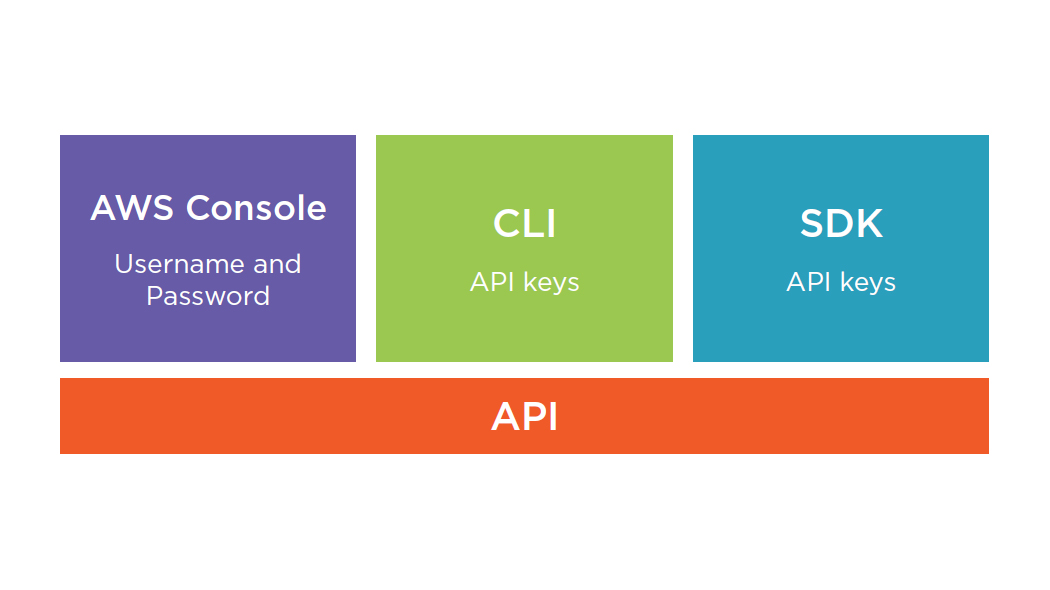
Objects in IAM
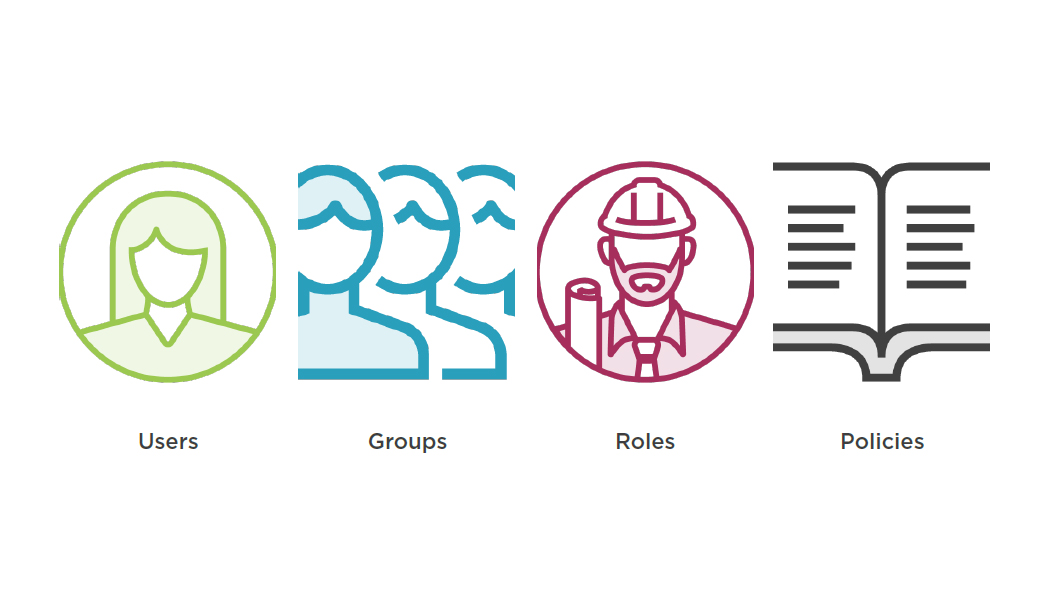
Users in IAM
- Represent actual person or application
- Can be member of multiple groups
- Can have inline or managed policies
- Different methods of authentication
- User/pass for console
- Up to 2 apikeys for CLI/SDK
- MFA
- User Access Advisor
Auditing Users Using CLI
Generate list of usernames
aws iam list-users --query Users[*].UserName
List group membership for user
aws iam list-groups-for-user --user-name <username>
User Access Advisor
Groups in IAM
Useful for aggregating permissions for multiple users
Can have managed or inline policies
Group Access Advisor
Auditing Groups Using CLI
Generate list of Groups
aws iam list-groups --query Groups[*].GroupName--output text
Get group members
aws iam get-group --group-name <groupname>
Group Access Advisor
Roles in IAM
- Cross-service access
- Cross account access
- Trust Relationship
- Role Access Advisor
Auditing Roles Using CLI
Generate list of Roles
aws iam list-roles --query Roles[*].RoleName--output text
List inline and managed policies attached to role
aws iam list-role-policies --role-name <rolename>
aws iam list-attached-role-policies --role-name <rolename>
Role Access Advisor
Policies in IAM
- Managed policies
- Policy version
- Inline policies
- Policy Access Advisor
Auditing Policies Using CLI
Generate list of customer managed policies
aws iam list-policies --scope Local --query Policies[*].Arn--output text
List entities using a managed policy
aws iam list-entities-for-policy --policy-arn<policyarn>
Policy Access Advisor
Combined Example and Summary CLI Commands
Combined example
for i in `aws iam list-users --query Users[*].UserName`
do
echo "username $i”
aws iam list-user-policies --user-name $i
done
- Loop through a dynamically generated list of usernames
- Print the username
- Print inline policies attached to each user (which is against best practices –use group policies instead)
Summary commands
aws iam get-account-authorization-details
aws iam get-account-summary
aws iam get-account-password-policy
- List all IAM objects and relationships to each other
- Return numeric count of each object
- Describe the IAM password policy for console credentials
- Analysis of an IAM Credential Report
- What can we learn?
Summary
- IAM Objects
- How they relate to each other
- Audit individually and together
- Methods for Audit
- CLI
- AWS Console
- Credential Report
Auditing VPC
Module Overview
- Auditing VPC
- Network configuration
- VPC Options
- Ingress/Egress Points
- Network security
What Is a VPC?
- Data center in the cloud
- Services placed inside
- EC2
- RDS
- ELB
- And more!
VPC Network Configuration
- Where do I put my VPC?
- How big is my VPC network?
- How do I segment my network?
- How can I keep my resources private?
Question
- Pick an AWS region
- CIDR network up to /16 (65536 addrs)
- Create subnets
- Route tables, NACLs, Security Groups
Choices
Create a VPC inventory
for i in `aws ec2 describe-regions --query
Regions[*].RegionName`
do
echo “region $i”
aws ec2 describe-vpcs --region $i
done
- Loop through a dynamically generated list of regions
- Print the region
- Print vpc id, cid rrange, and other details
Check VPCs for CIDR overlap
for i in `aws ec2 describe-regions --query
Regions[*].RegionName`
do
echo “region $i”
aws ec2 describe-vpcs--region $i--query Vpcs[*].CidrBlock
done
- Loop through a dynamically generated list of regions
- Print the region
- Print cidr range only, to visually check for overlap
VPC Options
- DNS Support
- DNS Hostnames
- DHCP Options
- Domain
- DNS servers
- NTP servers
- NetBIOS servers
Check DHCP option sets
for i in `aws ec2 describe-regions --query
Regions[*].RegionName`
do
echo “region $i”
aws ec2 describe-dhcp-options--region $i–output text
done
- Loop through a dynamically generated list of regions
- Print the region
- Print DHCP options. Look for custom domains or DNS servers when auditing.
VPC Ingress/Egress Points
- Internet Gateway (IGW)
- VPN Gateway (VGW)
- AWS Direct Connect
- VPC Peering Connections
- VPC Endpoints
- EC2 ClassicLink
Internet Gateway
- 2-way traffic
- Route table
- Public IP
- No firewall
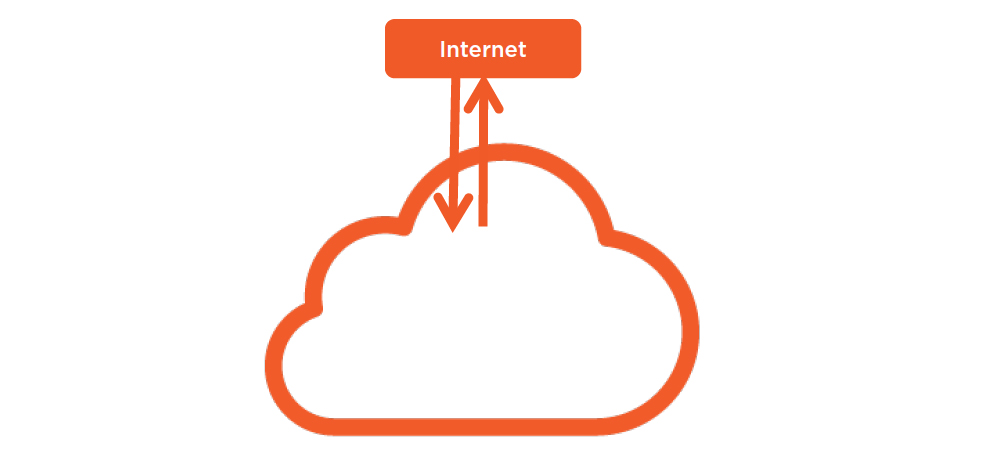
aws ec2 describe-internet-gateways --query
'InternetGateways[].{GwId:InternetGatewayId,
VpcId:Attachments[].VpcId}'--output text --region <region>
Create report of IGW and attached VPCs
Print the ID of each Internet Gateway in the region and which VPC it is attached to. Use JMES query format to customize output of the command.
VPN Gateway
- 2-way traffic
- Route table
- Private IP
- No firewall
- IPSEC Encryption
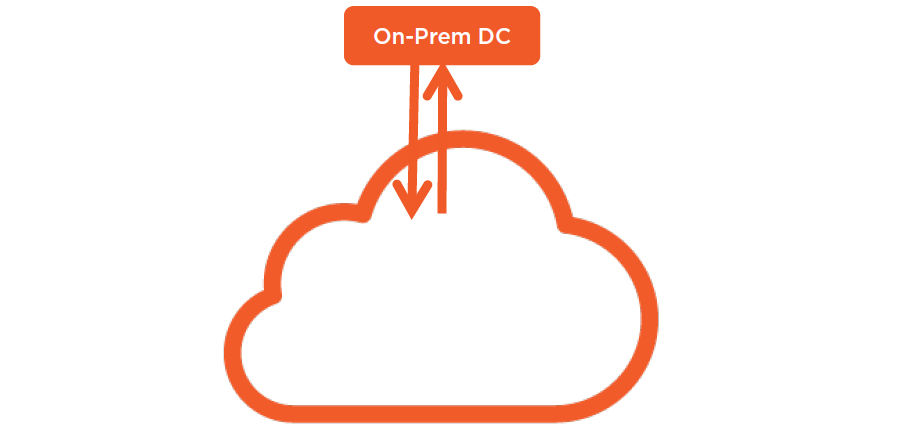
AWS Direct Connect
- 2-way traffic
- Route table
- Private IP
- No firewall
- 801.Q VLAN and BGP

VPC Peering
- 2-way traffic
- Route table
- Private IP
- No firewall
- Private, Point to Point

Describe VPC Peering Connections
for i in `aws ec2 describe-regions --query Regions[*].RegionName`
do
echo “region $i”
aws ec2 describe-vpc-peering-connections --region us-west-2 -
-query
'VpcPeeringConnections[].[AccepterVpcInfo.VpcId,RequesterVpcInfo.VpcId]’
done
- Loop through a dynamically generated list of regions
- Print the region
- Print the accepter and requester VPC Ids for each connection
VPC Endpoints
- S3 only
- 1-way traffic
- Route table
- Endpoint Policies
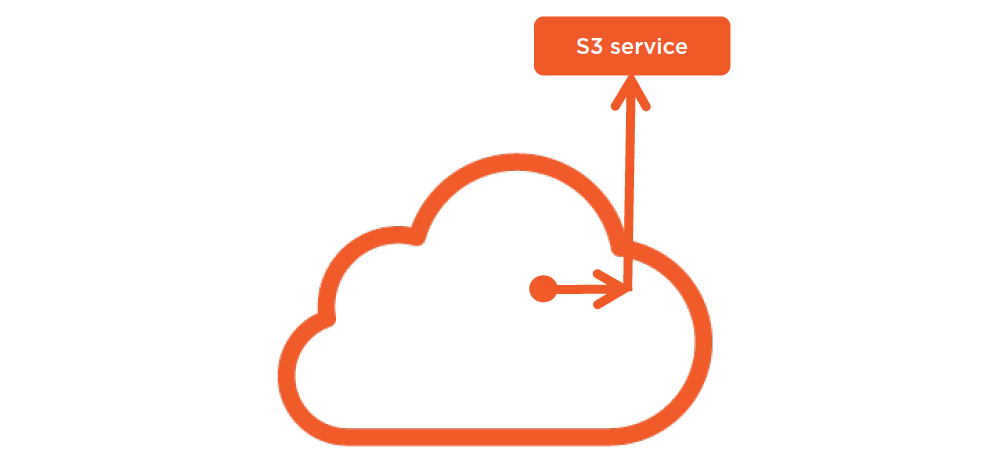
Describe VPC Endpoints
for i in `aws ec2 describe-regions --query Regions[*].RegionName`
do
echo “region $i”
aws ec2 describe-vpc-endpoints --query 'VpcEndpoints[].[VpcId,ServiceName]'
done
- Loop through a dynamically generated list of regions
- Print the region
- Print each endpoint with the VPC ID and service name.
EC2 ClassicLink
- 1-way traffic
- Route table
- Private IP
- No firewall
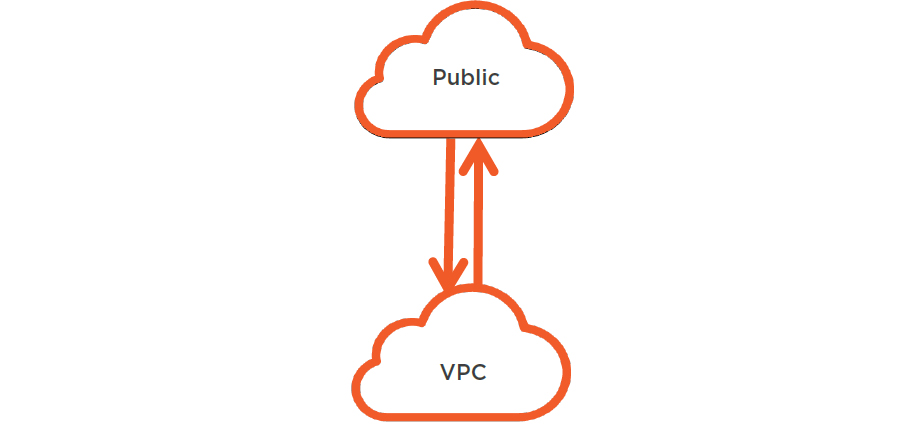
Discover VPCs with Classic Link Enabled
for i in `aws ec2 describe-regions --query Regions[*].RegionName`
do
echo “region $i”
awse c2 describe-vpc-classic-link --output json--query Vpcs[].[VpcId,ClassicLinkEnabled]
done
- Loop through a dynamically generated list of regions
- Print the region
- Print each VPC ID and whether ClassicLinkis enabled
Discovering Ingress/Egress points on a VPC
VPC Security
- Route Tables
- Network Access Control Lists (NACLs)
- VPC Flow Logs
VPC Route Tables
Destination
Any cidr network range or endpoint object
Target
Egress point
Select from list
aws ec2 describe-route-tables --query
'RouteTables[].[[VpcId,Routes[].GatewayId][]]’ --output text
List all route tables in the region with target ID
Print each VPC ID, and all targets used by route tables in the VPC.
Useful for discovering possible egress points from the VPC.
Network Access Control Lists
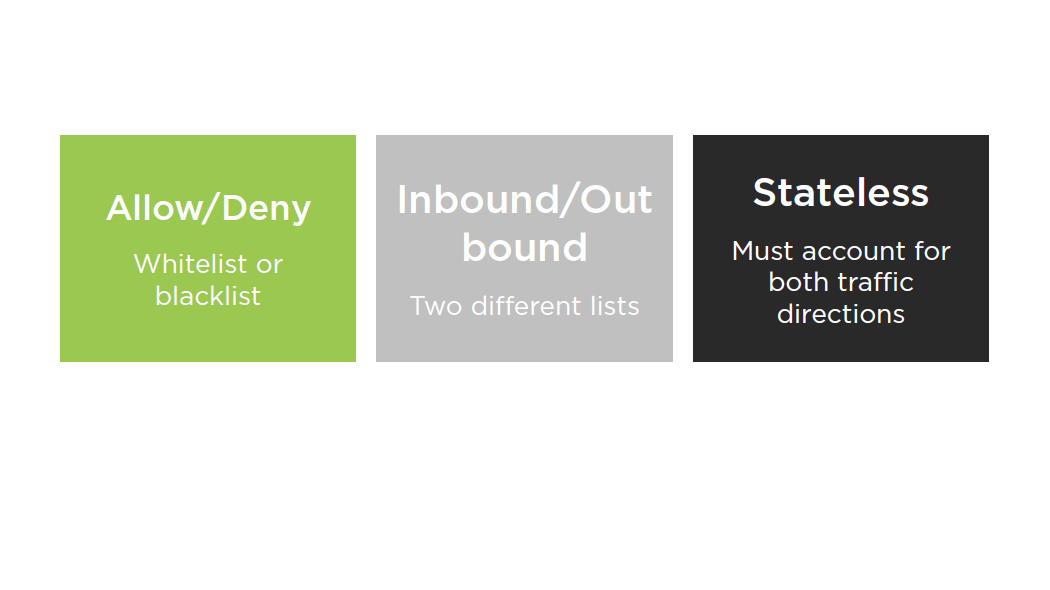
aws ec2 describe-network-acls--output table --region
<region>
Print NACLs in human-readable form
Print easy-to-read text output of all NACLs in a region, including the associated VPC ID and Subnet ID
VPC Flow Logs
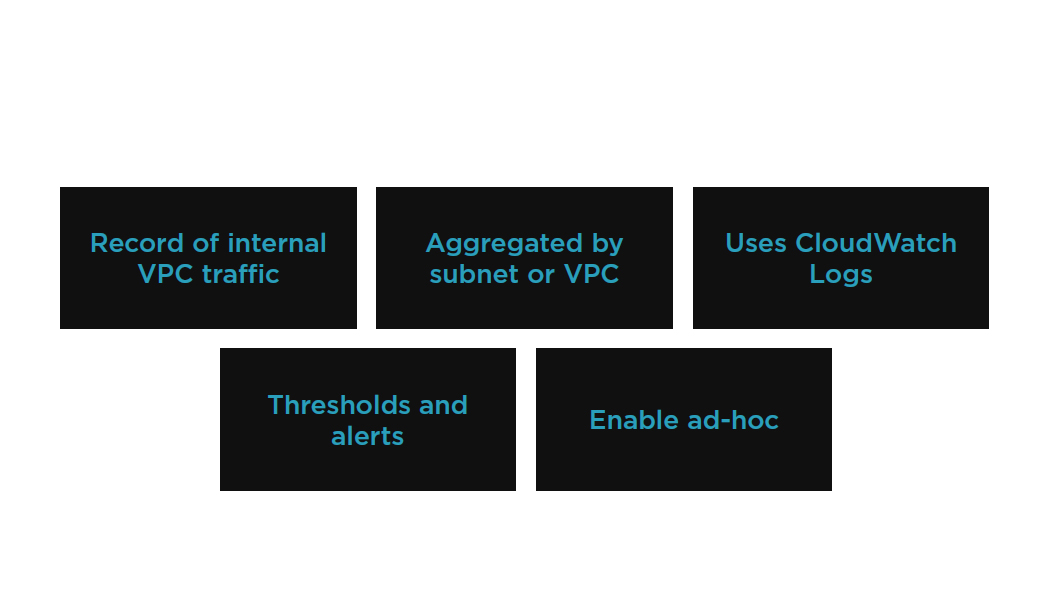
Explore VPC Flow Logs and Route Tables
Summary
- VPC can be customized in many different ways
- VPC environments have many options for ingress and egress
- Resources in the VPC can have security mechanisms separate from the VPC itself
- Next Up: Auditing EC2
Auditing EC2
Module Overview
- Security Features
- Inventory And Best Practices
Auditing EC2
EC2 Security
- Shared Responsibility Security Model
- Hypervisor
- EC2 keypairs
- Security groups
- Demo: Auditing Security Groups with AWS Config
Shared Responsibility Security Model
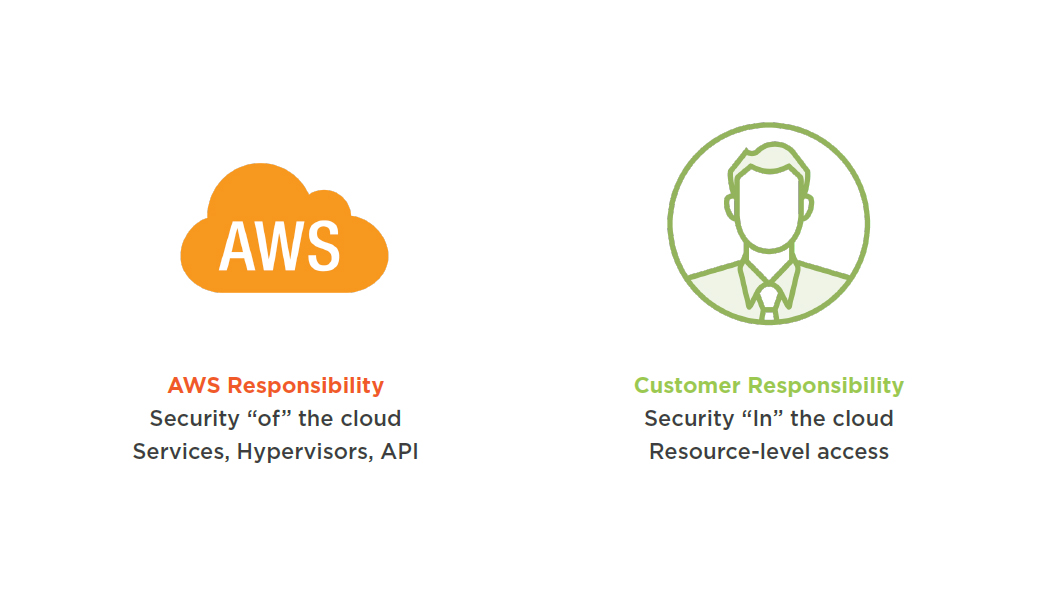
Security Model Applied to EC2
AWS
Data centers
Hardware
Hypervisor
API
Customer
OS access
OS updates
Security patches
Penetration testing
EC2 Hypervisor
- Xen Hypervisor (heavily modified)
- Virtualization types
- HVM is full virtualization
- PV is “lighter virtualization”
- VM Isolation on all resources
- CPU
- Memory
- Disk
- Network
EC2 Keypairs
Linux
SSH using private key
Windows
Decrypt Administrator PW
Security Groups -Function
- Stateful firewall
- Applied to network interface
- Multiple allowed per interface
- Rulesetsapplied as a whole
- Least restrictive rule wins
- Inbound rules default deny
- Outbound rules default allow
Security Groups –Best Practices
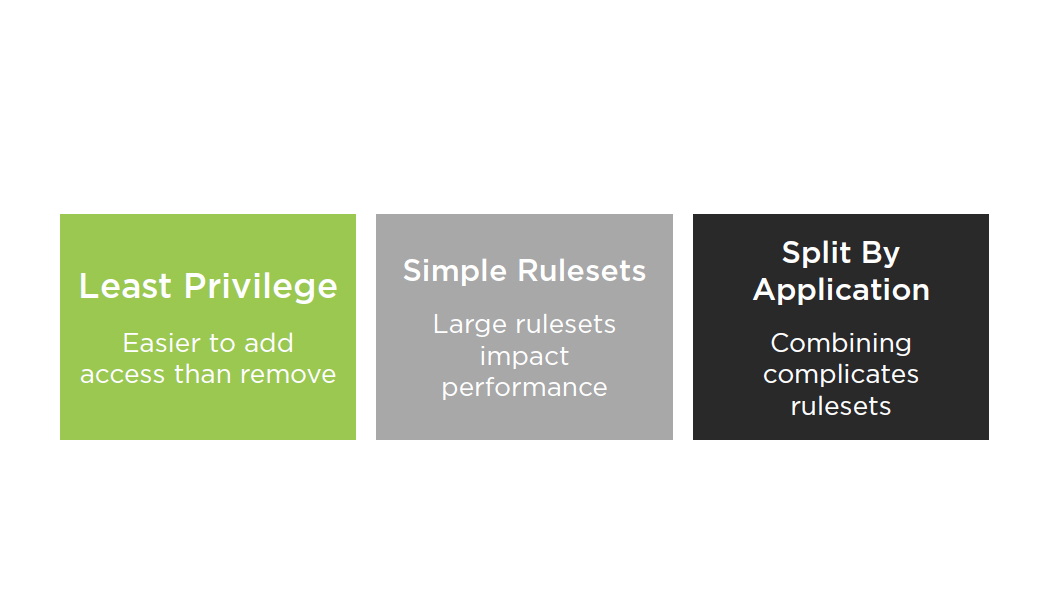
Auditing Security Groups Script Part 1
#!/bin/bash
REGION=us-west-1
SGOUT="/tmp/sginfo”
aws ec2 describe-security-groups --region $REGION --output text > $SGOUT
IFS=$'\n'
cat $SGOUT | while read line
do
Auditing Security Groups Input File
SECURITYGROUPS registration frontend sg-c21df0a7 vpc1w2-reg2.0-prod-frontend 168369983848 vpc-0ef6e36c
IPPERMISSIONS 80 tcp 80
IPRANGES 0.0.0.0/0
IPPERMISSIONS -1
IPRANGES 10.0.0.0/18
IPRANGES 10.0.128.0/18
IPRANGES 10.0.64.0/18
IPPERMISSIONS 22 tcp 22
IPRANGES 208.76.0.0/22
IPPERMISSIONS 443 tcp 443
IPRANGES 0.0.0.0/0
IPPERMISSIONSEGRESS -1
IPRANGES 0.0.0.0/0
Auditing Security Groups Script Part 2
case $line in
SECURITYGROUPS*)
GID=(`echo $line | awk–F”\t” '{print $3}'`)
GNAME=(`echo $line | awk–F”\t” '{print $4}'`)
;;
IPPERMISSIONSEGRESS*)
PROTO=“EGRESS”
;;
Auditing Security Groups Script Part 3
IPPERMISSIONS*)
FROMPORT=(`echo $line | awk–F”\t” '{print $2}'`)
PROTO=(`echo $line | awk–F”\t” '{print $3}'`)
TOPORT=(`echo $line | awk–F”\t” '{print $4}'`)
;;
Auditing Security Groups Script Part 4
IPRANGES*)
CIDR=(`echo $line | awk–F”\t” '{print $2}'`)
if [[ "$CIDR" = "0.0.0.0/0" && "$PROTO" != ”EGRESS" ]]; then
echo "$GNAME,$GID,$CIDR,$PROTO,$FROMPORT,$TOPORT"
fi
;;
esac
Done
rm $SGOUT
Auditing Security Groups Script Output
tu-prod-gateway,sg-3a05610a,0.0.0.0/0,tcp,22,22
vpc2w2-reg2.0-loadtest-frontend,sg-e318f586,0.0.0.0/0,tcp,80,80
vpc2w2-reg2.0-loadtest-frontend,sg-e318f586,0.0.0.0/0,tcp,443,443
vpc2w2-wp-stage-frontend,sg-c4abe6a3,0.0.0.0/0,tcp,80,80
vpc2w2-wp-stage-frontend,sg-c4abe6a3,0.0.0.0/0,tcp,443,443
Auditing Security Groups Script Summary
- CSV is easy to ingest into a database
- Python is useful for SDK work
- Task automation will make audits easier
Using AWS Configto Audit SG
AWS Trusted Advisor SG Report
EC2 Inventory and Tagging Best Practices
- Using CLI to inventory EC2
- Resource tagging
- Trusted advisor
- Demo: EC2 dashboard and filters
Why Use CLI to Audit EC2?
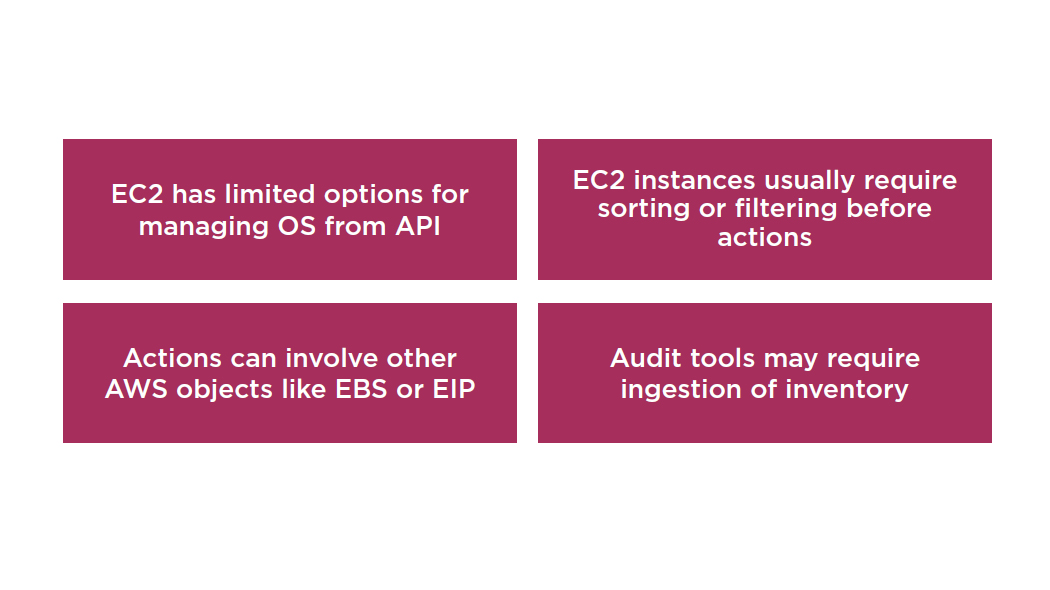
aws ec2 describe-instances --output text --region <region>
--filter Name=instance-state-code,Values=16 --query
'Reservations[*].Instances[*].[InstanceId,PublicDnsName]'
Generate List of Instance ID and Public DNS
Print the Instance ID of each running instance (instance state code 16) and its associated Public DNS.
Great for inventory and loop-and-ssh functions.
aws ec2 describe-instances --output text --region <region>
--query
Reservations[].Instances[].[[InstanceId,SecurityGroups[].Gr
oupId,SecurityGroups[].GroupName][]]| tr'\t' ','
Generate CSV of Instance ID, SG ID, SG Name
Print each Instance ID in the region with its Security Group IDs and Security Group Names in CSV format.
The [] at the end of the query forces output to stay on the same line.
EC2 Tags
- 10 tags per instance
- Key/Value pairs, 128/255 character limit
- Integrated with CLI and billing
Tagging Strategies
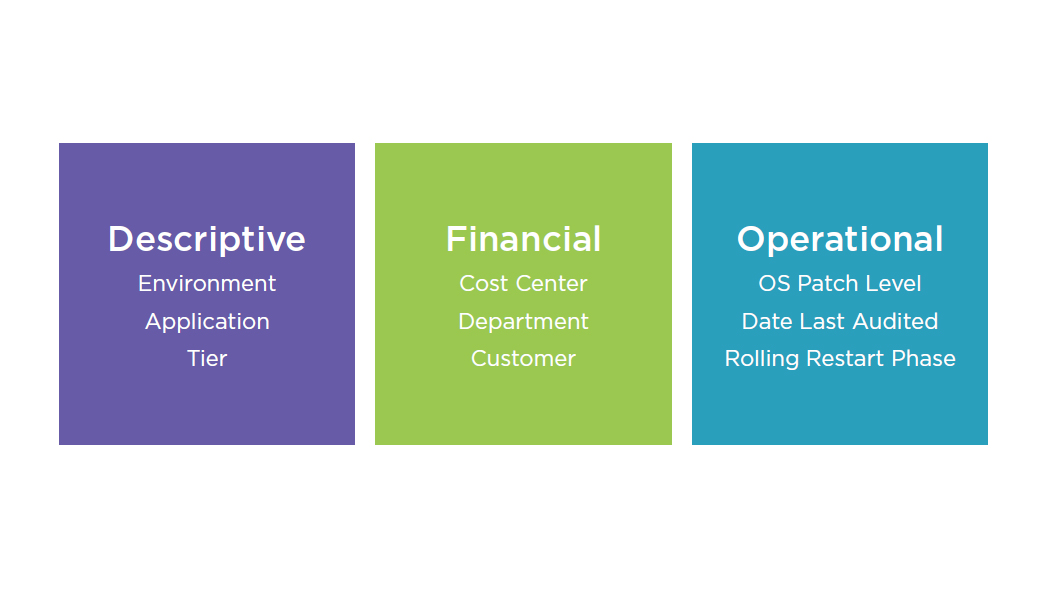
Audit for Missing Tag Part 1
#!/bin/bash
REGION="us-west-2"
TAG="CostCenter"
TAGFILE="/tmp/ec2tags"
aws ec2 describe-tags --region $REGION --filters=Name=resource-
type,Values=instance--output text > $TAGFILE
ec2instances=`awsec2 describe-instances --region $REGION --query
Reservations[].Instances[].InstanceId--output text |tr'\t' '\n'`
Audit for Missing Tag Part 2
for i in `echo $ec2instances`; do
if [[ `grep $i $TAGFILE |grep "$TAG"` = "" ]]; then
echo "$i is missing $TAG"
fi
done
rm $TAGFILE
AWS Trusted Advisor
- Free “Lite” version
- Types of predefined reports
- Cost optimization
- Performance
- Security
- Fault tolerance
EC2 dashboard and filters
Summary
- EC2 security involves AWS and customer
- Security groups can require extra effort to audit from the CLI
- Tags and filters are important
- Next Up: Auditing EBS
Auditing EBS
Module Overview
- EBS Basics
- EBS Security
- EBS Inventory
- EBS Best Practices
EBS Basics
- Network attached block storage
- Availability Zone specific
- Frequent Snapshots Decrease AFR
Volume Types
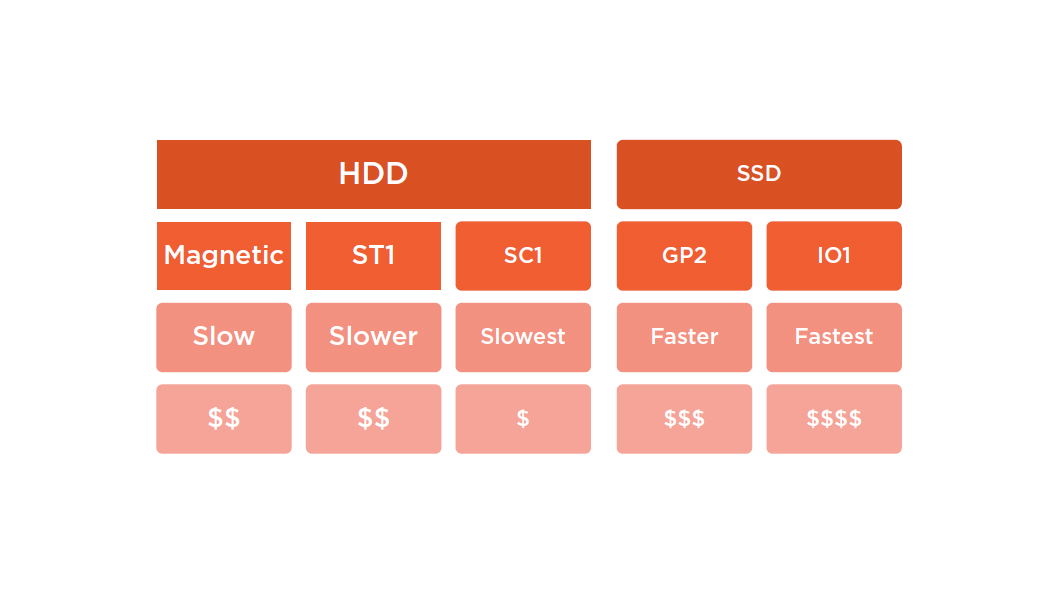
EBS Security
- NOT shared storage
- Hardware Decommissioning
- Volume encryption
- Demo: Add encryption to a volume
Storage Decommissioning
https://d0.awsstatic.com/whitepapers/aws-security-whitepaper.pdf
AWS uses the techniques detailed in DoD5220.22 -M (“National Industrial Security Program Operating Manual “) or NIST 800 -88 (“Guidelines for Media Sanitization”) to destroy data as part of the decommissioning process. All decommissioned magnetic storage devices are degaussed and physically destroyed in accordance with industry -standard practices.
EBS Volume Encryption
- Boot volumes
- Data volumes
- Encrypts traffic and data
- Not available for all instance types
- Newer generations of EC2 only
- Not for M1, C1, T1, etc
- Uses KMS (Key Management Service)
EBS Encryption Integration Points
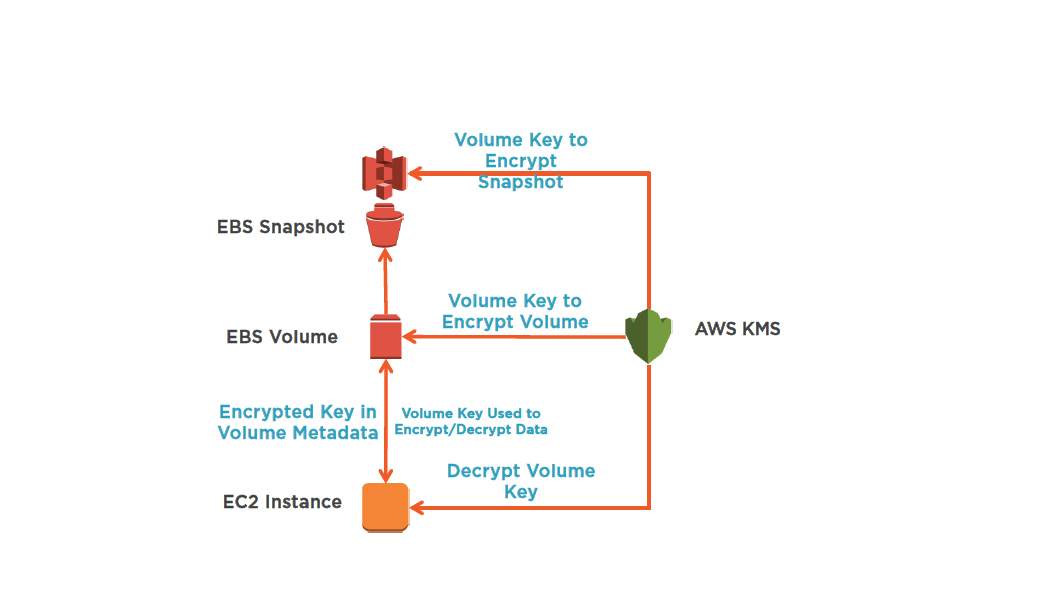
Demo: Add Encryption To A Volume
EBS Inventory
Volumes
By Type
By Size
Detached
Snapshots
Rotation
Region Copy
Orphans
Volume Inventory: Find Detached Volumes
aws ec2 describe-volumes --region <region> \
--query Volumes[].VolumeId\
--filters Name=status,Values=available
Snapshot Inventory: Purge All But N Part 1
#!/bin/bash
VOLUMEID=$1
REGION=$2
NUMKEEP=$3
TAIL=$(( $NUMKEEP + 1 ))
Snapshot Inventory: Purge All But N Part 2
SNAPIDS=`aws ec2 describe-snapshots \
--output text --region $REGION \
--query Snapshots[].[SnapshotId,StartTime] \
--filters Name=volume-id,Values=$VOLUMEID \
|sort -r -k2 |cut -f1 |tail -n +$TAIL`
Snapshot Inventory: Purge All But N Part 3
if [ "$SNAPIDS" != "" ]; then
for SNAP in $SNAPIDS; do
echo "Deleting snapshot $SNAP"
aws ec2 delete-snapshot --region $REGION --snapshot-id $SNAP
done
else
echo "Not enough snapshots, exiting"
fi
EBS Best Practices: Volume Sizing
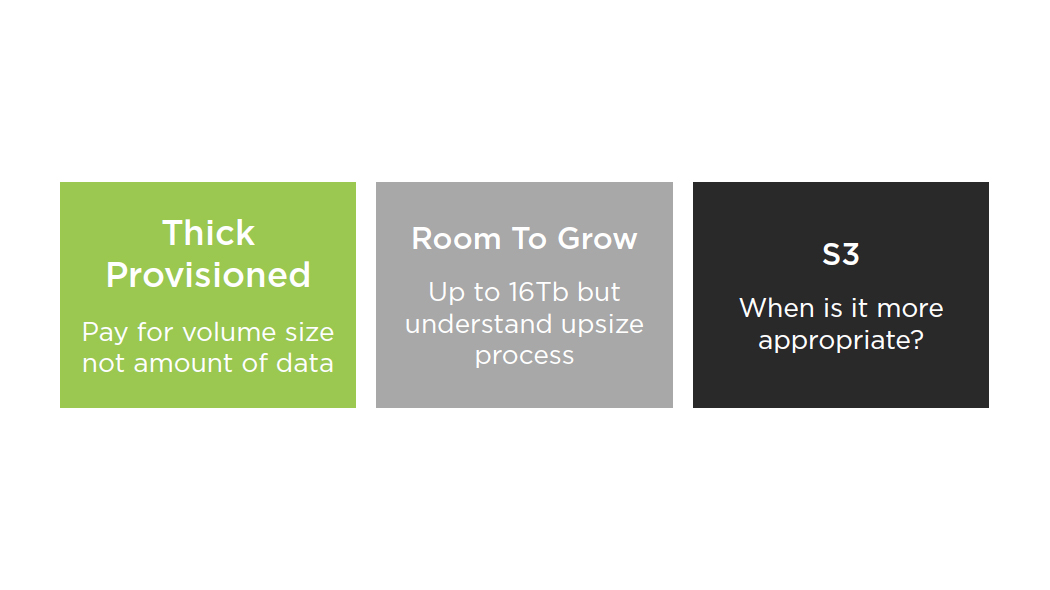
Best Practices: Volume Performance
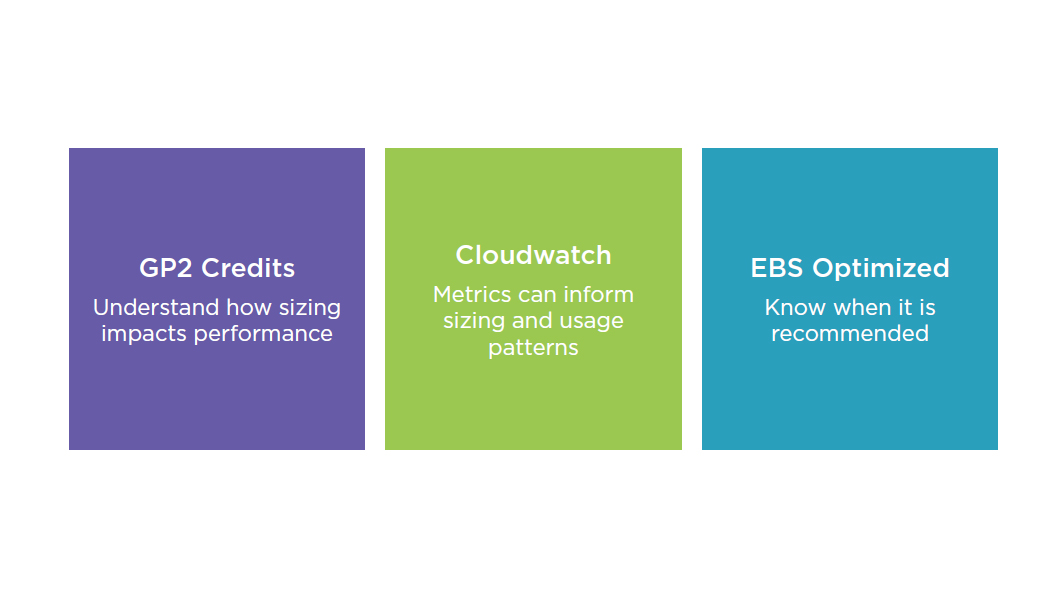
Demo Scenario: Compromised Instance
- How can we perform Root Cause Analysis safely?
- VPC, EC2, EBS
Summary
- EBS Volumes give many choices for performance
- Encryption is simple to deploy
- Snapshot management is critical
- Next Up: Auditing S3
Auditing S3
Module Overview
- S3 Basics
- S3 Security
- S3 Inventory
- S3 Best Practices
S3 Basics
- Object Store
- Natively Available Online
- Fully Managed Service
S3 Hierarchy
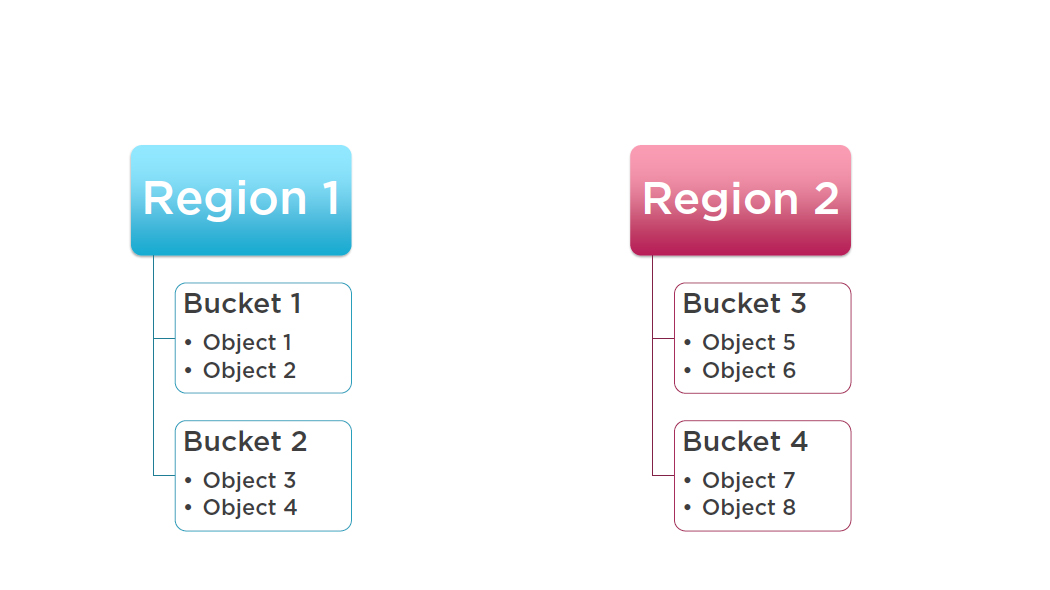
S3 Storage Classes
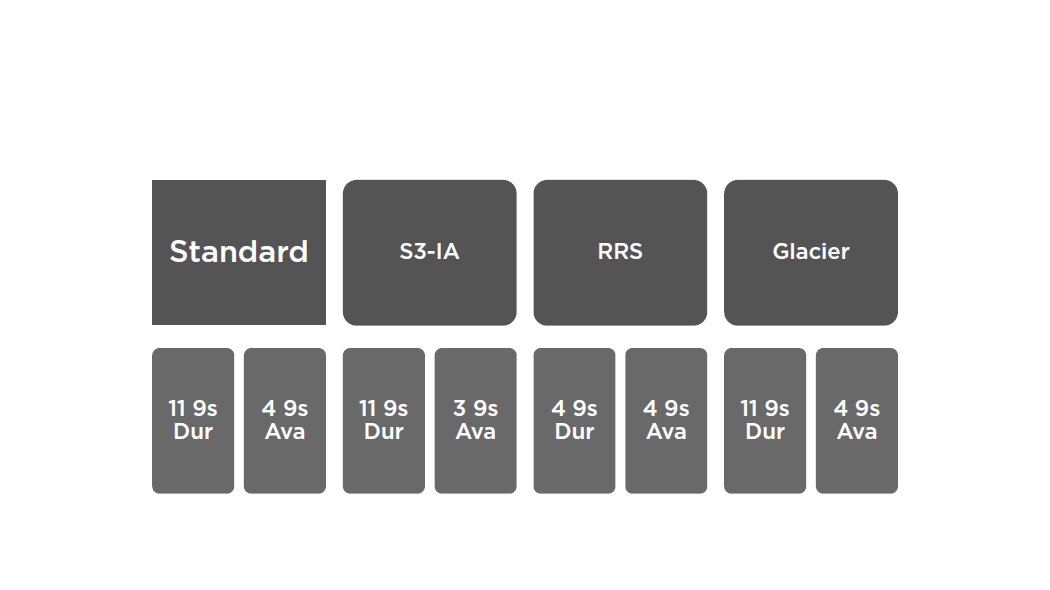
S3 Security
- Access Control
- IAM
- ACLs
- Bucket Policy
- Encryption
- Server Side
- Client Side
Access Control
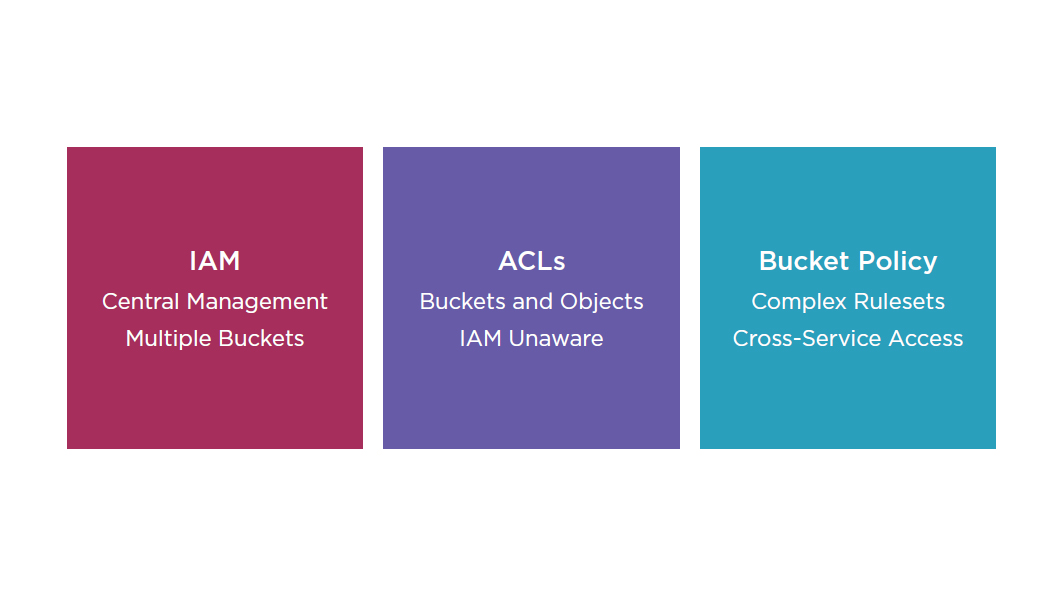
S3 Object Encryption –Server Side with KMS
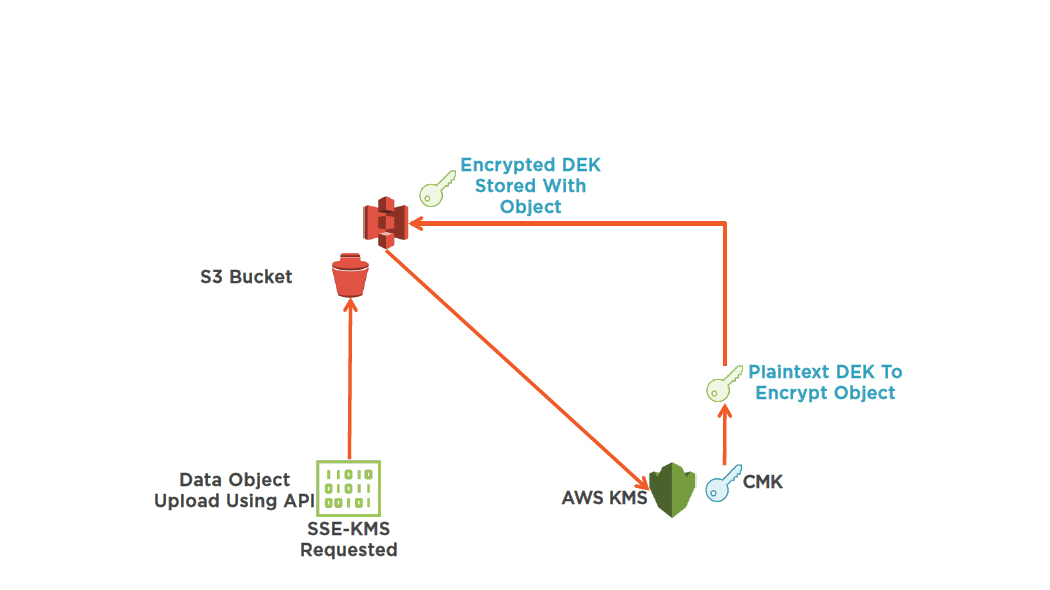
S3 Object Encryption –Client Side
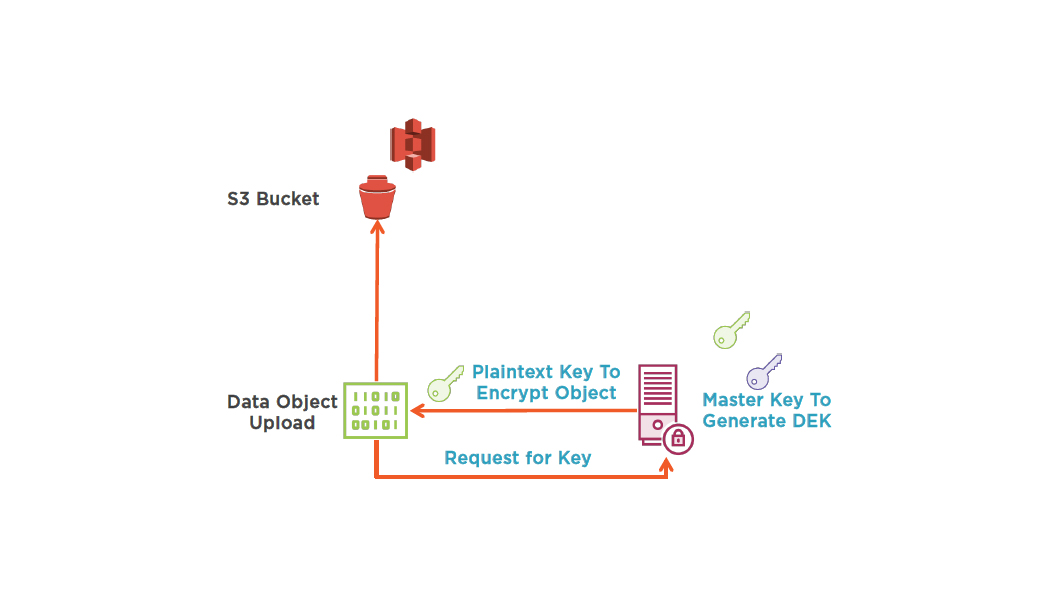
Demo: Uploading into S3 Using SSE-KMS
S3 Inventory
Buckets
By Region
By Name
By Size
Objects
By Prefix
By Size
By Encryption Status
S3 Inventory: Sort Buckets by Region Part 1
PRESORTFILE="/tmp/notsorted"
POSTSORTFILE="/tmp/sorted"
rm $PRESORTFILE $POSTSORTFILE
BUCKETLIST=`aws s3api list-buckets --query 'Buckets[].Name' |tr'\t' '\n'`
S3 Inventory: Sort Buckets by Region Part 2
for BUCKET in $BUCKETLIST; do
LOCATION=`aws s3api get-bucket-location --bucket $BUCKET`
echo "$LOCATION,$BUCKET" >> $PRESORTFILE
done
S3 Inventory: Sort Buckets by Region Part 3
sort -n $PRESORTFILE > $POSTSORTFILE
cat $POSTSORTFILE
Snapshot Inventory: List Bucket Sizes Part 1
#!/bin/bash
BUCKETLIST="/tmp/sorted"
for BUCKETINFO in `cat $BUCKETLIST`; do
REGION=`echo $BUCKETINFO |cut -f1 -d,`
if [[ $REGION == "None" ]]; then
REGION="us-east-1 --endpoint-urlhttps://s3.amazonaws.com"
fi
Snapshot Inventory: List Bucket Sizes Part 2
BUCKET=`echo $BUCKETINFO |cut -f2 -d,`
SIZE=`aws s3api list-objects --region $REGION --bucket $BUCKET --output json--query '[sum(Contents[].Size)]'`
echo "$BUCKET,$SIZE"
done
S3 Best Practices: Lifecycle Configuration
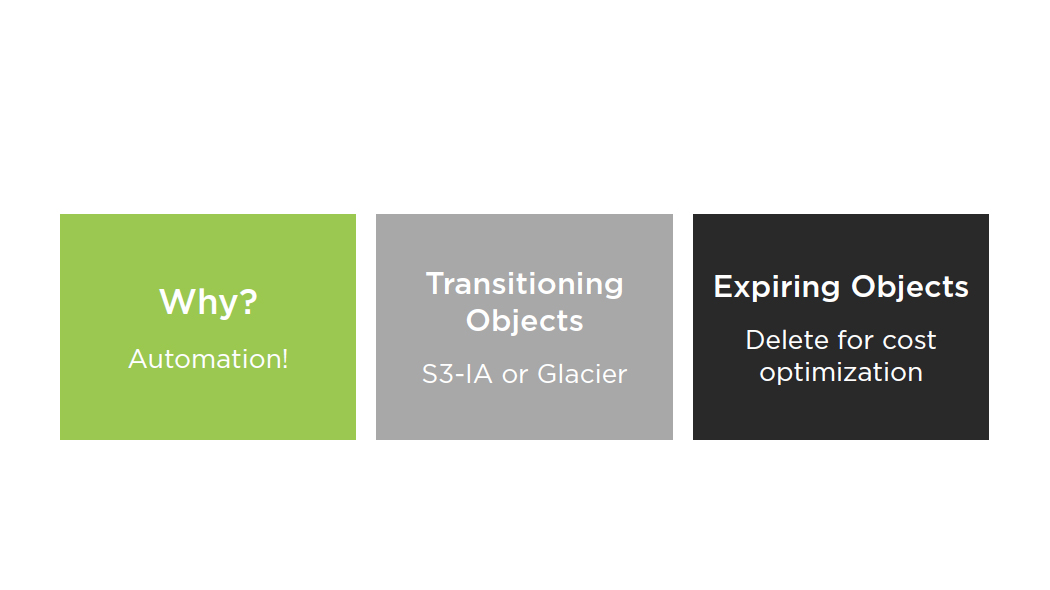
Best Practices: Naming Conventions
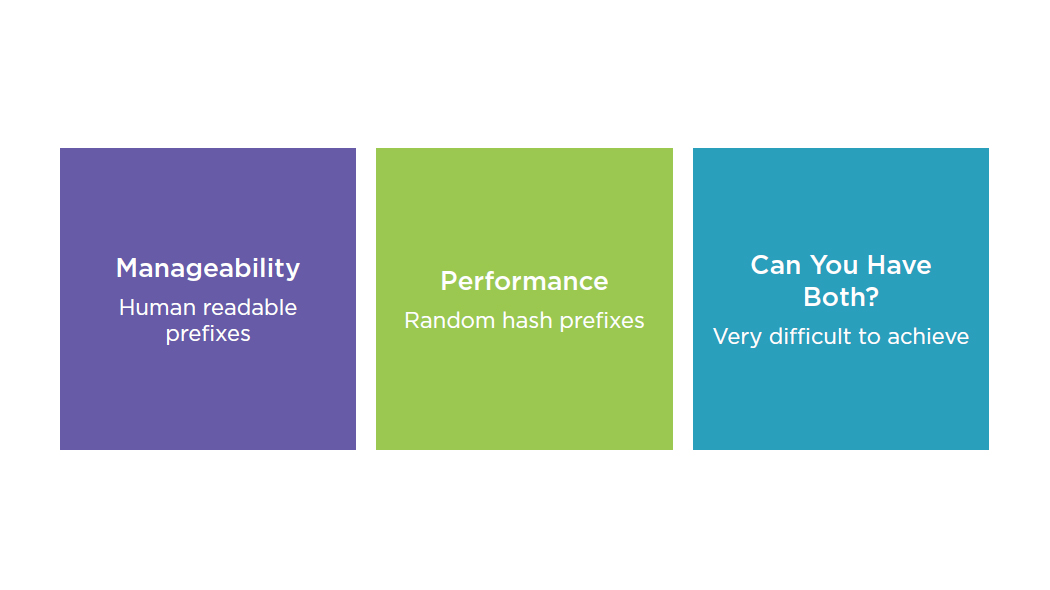
Summary
- S3 is a managed service. Customer only responsible for data protection and access.
- Several options for protecting objects
- Bucket audit actions can be complex
Audit Results
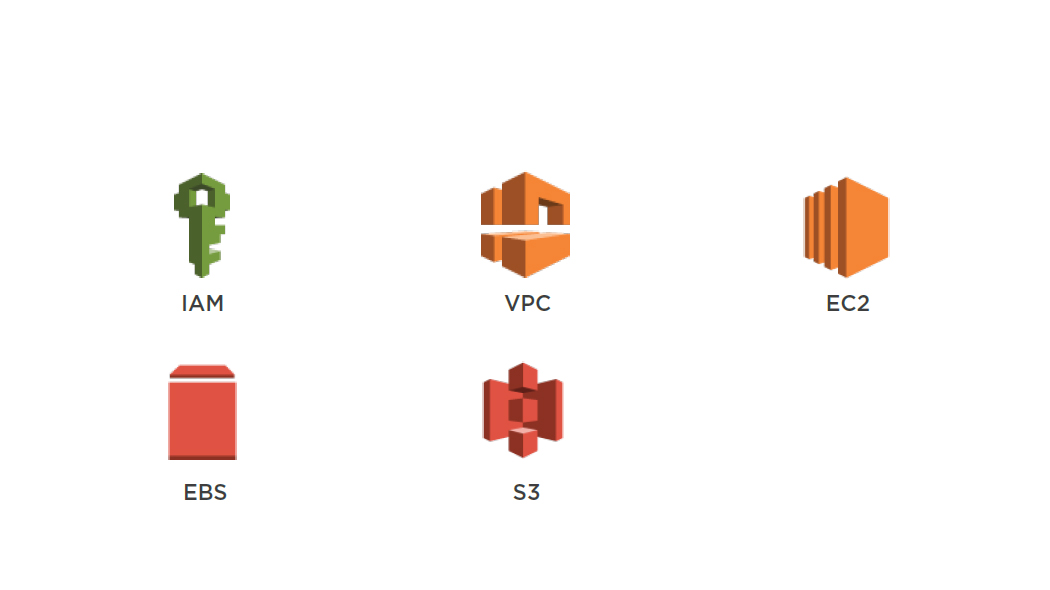
Questions?

